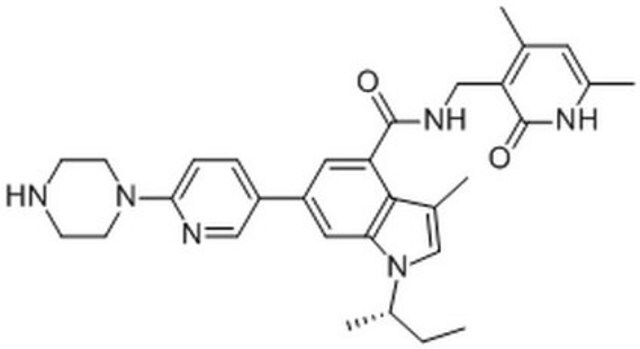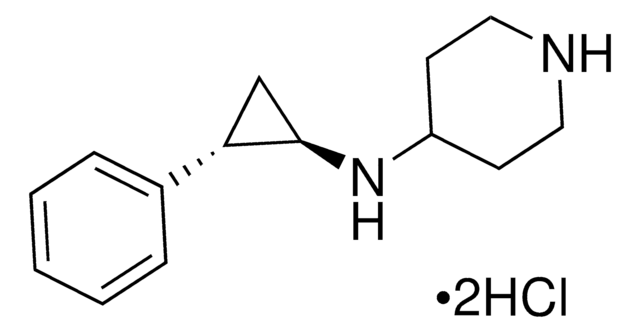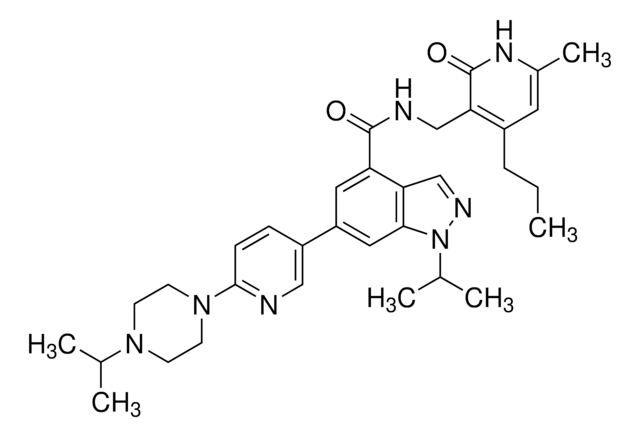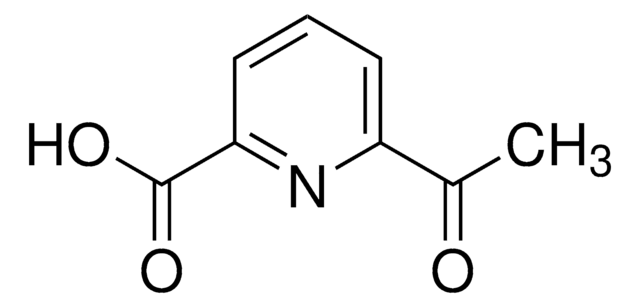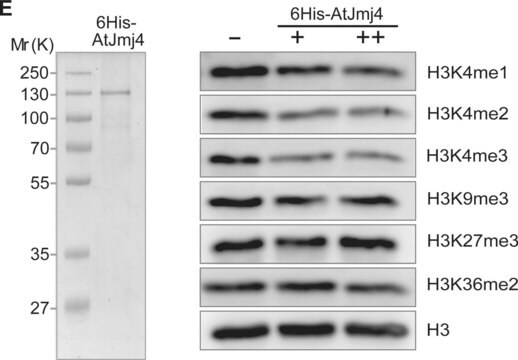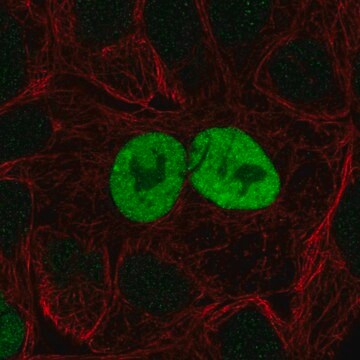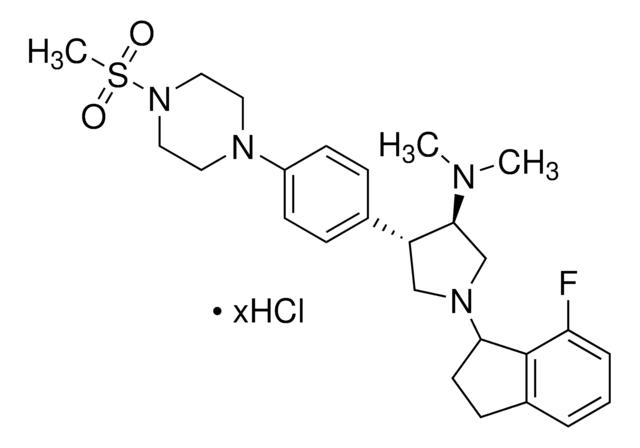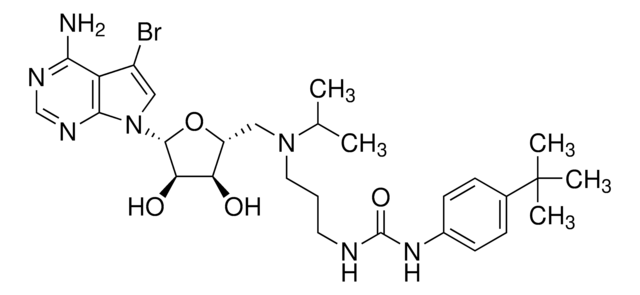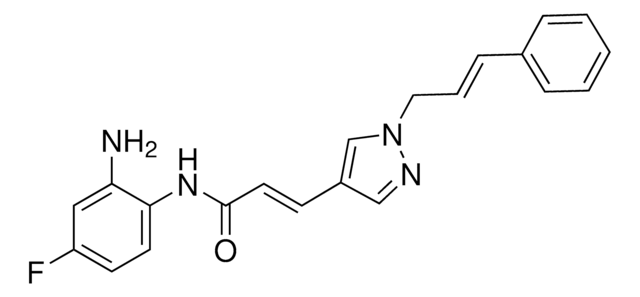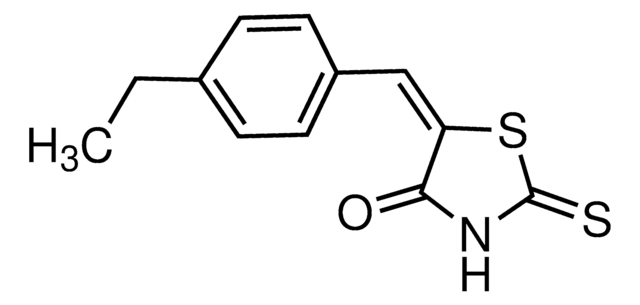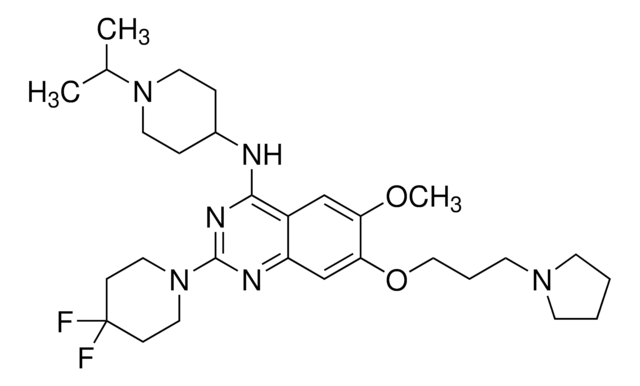SML0766
GSK343
≥98% (HPLC)
Sinónimos:
N-[(1,2-Dihydro-6-methyl-2-oxo-4-propyl-3-pyridinyl)methyl]-1-(1-methylethyl)-6-[2-(4-methyl-1-piperazinyl)-4-pyridinyl]-1H-indazole-4-carboxamide, N-[(6-Methyl-2-oxo-4-propyl-1,2-dihydropyridin-3-yl)methyl]-6-[2-(4-methylpiperazin-1-yl)pyridin-4-yl]-1-(propan-2-yl)-1H-indazole-4-carboxamide
About This Item
Productos recomendados
Quality Level
assay
≥98% (HPLC)
form
powder
color
, white to beige to brown
solubility
DMSO: 15 mg/mL, clear
storage temp.
2-8°C
SMILES string
CN(CC1)CCN1C2=NC=CC(C3=CC4=C(C=NN4C(C)C)C(C(NCC5=C(CCC)C=C(C)NC5=O)=O)=C3)=C2
InChI
1S/C31H39N7O2/c1-6-7-23-14-21(4)35-31(40)26(23)18-33-30(39)25-15-24(16-28-27(25)19-34-38(28)20(2)3)22-8-9-32-29(17-22)37-12-10-36(5)11-13-37/h8-9,14-17,19-20H,6-7,10-13,18H2,1-5H3,(H,33,39)(H,35,40)
InChI key
ULNXAWLQFZMIHX-UHFFFAOYSA-N
Categorías relacionadas
Application
- as an inhibitor of enhancer of zeste homolog 2 (EZH2) to assess the impact of chromatin condensation on cell migration
- as histone methyl transferase inhibitor, to suppress the Polyandrocarpa misakiensis, mitochondrial non-coding-region (NCR) PmNCR reporter gene expression, facilitated by TC14-3
- as a supplement in the growth medium to inhibit the generation of H3K27me3 or to inhibit RNA polymerase II
- as EZH2 inhibitor to treat castration-resistant neuroendocrine prostate cancer (CRPC-NE)
Biochem/physiol Actions
To learn about other SGC chemical probes for epigenetic targets, visit sigma.com/sgc
Features and Benefits
Other Notes
Related product
signalword
Warning
hcodes
Hazard Classifications
Acute Tox. 4 Oral
Storage Class
11 - Combustible Solids
wgk_germany
WGK 3
flash_point_f
Not applicable
flash_point_c
Not applicable
Certificados de análisis (COA)
Busque Certificados de análisis (COA) introduciendo el número de lote del producto. Los números de lote se encuentran en la etiqueta del producto después de las palabras «Lot» o «Batch»
¿Ya tiene este producto?
Encuentre la documentación para los productos que ha comprado recientemente en la Biblioteca de documentos.
Los clientes también vieron
Contenido relacionado
We offer a variety of small molecule research tools, such as transcription factor modulators, inhibitors of chromatin modifying enzymes, and agonists/antagonists for target identification and validation in gene regulation research; a selection of these research tools is shown below.
Nuestro equipo de científicos tiene experiencia en todas las áreas de investigación: Ciencias de la vida, Ciencia de los materiales, Síntesis química, Cromatografía, Analítica y muchas otras.
Póngase en contacto con el Servicio técnico